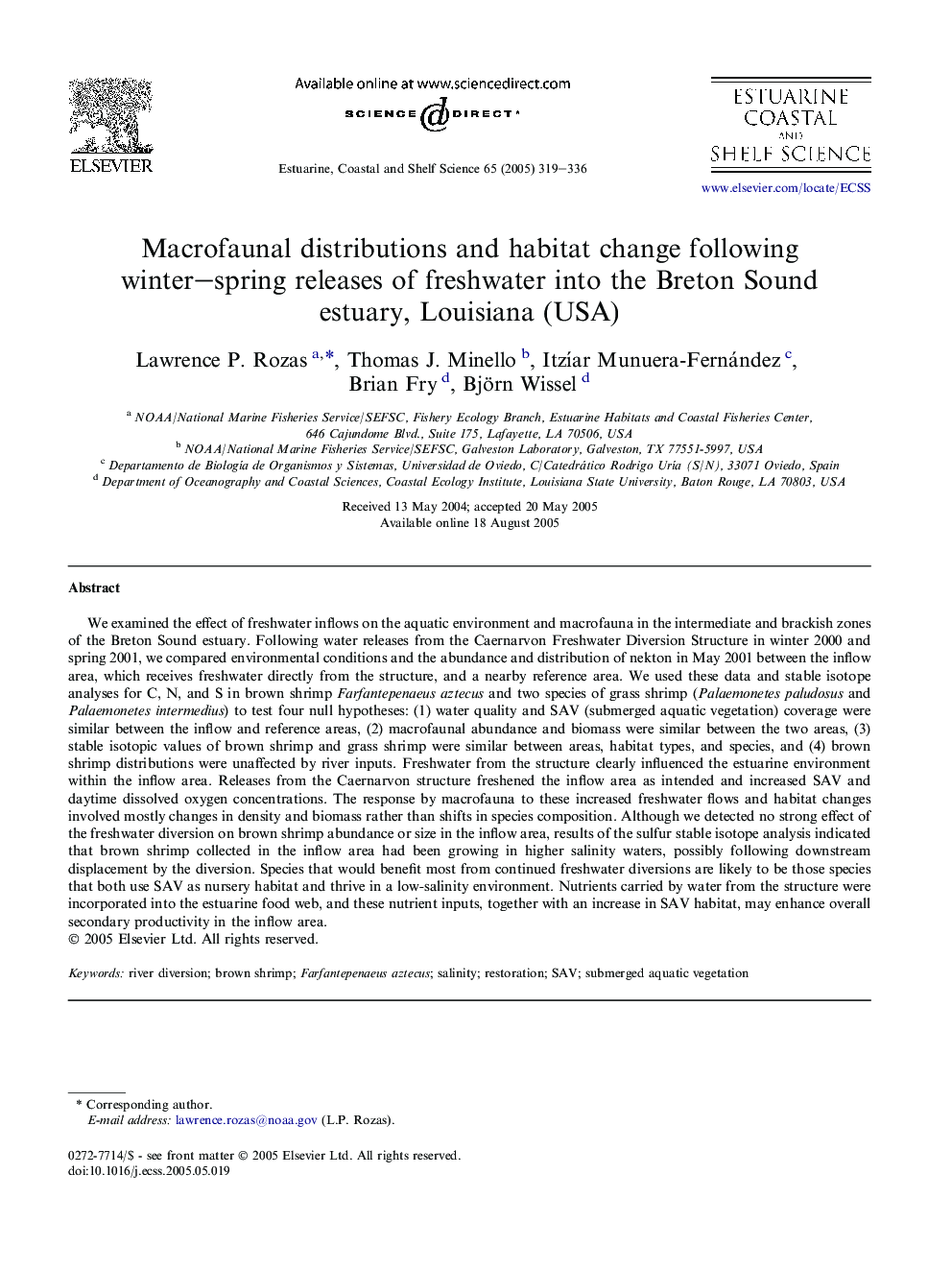| کد مقاله | کد نشریه | سال انتشار | مقاله انگلیسی | نسخه تمام متن |
|---|---|---|---|---|
| 9480674 | 1626717 | 2005 | 18 صفحه PDF | دانلود رایگان |
عنوان انگلیسی مقاله ISI
Macrofaunal distributions and habitat change following winter-spring releases of freshwater into the Breton Sound estuary, Louisiana (USA)
دانلود مقاله + سفارش ترجمه
دانلود مقاله ISI انگلیسی
رایگان برای ایرانیان
کلمات کلیدی
موضوعات مرتبط
مهندسی و علوم پایه
علوم زمین و سیارات
زمین شناسی
پیش نمایش صفحه اول مقاله

چکیده انگلیسی
We examined the effect of freshwater inflows on the aquatic environment and macrofauna in the intermediate and brackish zones of the Breton Sound estuary. Following water releases from the Caernarvon Freshwater Diversion Structure in winter 2000 and spring 2001, we compared environmental conditions and the abundance and distribution of nekton in May 2001 between the inflow area, which receives freshwater directly from the structure, and a nearby reference area. We used these data and stable isotope analyses for C, N, and S in brown shrimp Farfantepenaeus aztecus and two species of grass shrimp (Palaemonetes paludosus and Palaemonetes intermedius) to test four null hypotheses: (1) water quality and SAV (submerged aquatic vegetation) coverage were similar between the inflow and reference areas, (2) macrofaunal abundance and biomass were similar between the two areas, (3) stable isotopic values of brown shrimp and grass shrimp were similar between areas, habitat types, and species, and (4) brown shrimp distributions were unaffected by river inputs. Freshwater from the structure clearly influenced the estuarine environment within the inflow area. Releases from the Caernarvon structure freshened the inflow area as intended and increased SAV and daytime dissolved oxygen concentrations. The response by macrofauna to these increased freshwater flows and habitat changes involved mostly changes in density and biomass rather than shifts in species composition. Although we detected no strong effect of the freshwater diversion on brown shrimp abundance or size in the inflow area, results of the sulfur stable isotope analysis indicated that brown shrimp collected in the inflow area had been growing in higher salinity waters, possibly following downstream displacement by the diversion. Species that would benefit most from continued freshwater diversions are likely to be those species that both use SAV as nursery habitat and thrive in a low-salinity environment. Nutrients carried by water from the structure were incorporated into the estuarine food web, and these nutrient inputs, together with an increase in SAV habitat, may enhance overall secondary productivity in the inflow area.
ناشر
Database: Elsevier - ScienceDirect (ساینس دایرکت)
Journal: Estuarine, Coastal and Shelf Science - Volume 65, Issues 1â2, October 2005, Pages 319-336
Journal: Estuarine, Coastal and Shelf Science - Volume 65, Issues 1â2, October 2005, Pages 319-336
نویسندگان
Lawrence P. Rozas, Thomas J. Minello, ItzÃar Munuera-Fernández, Brian Fry, Björn Wissel,